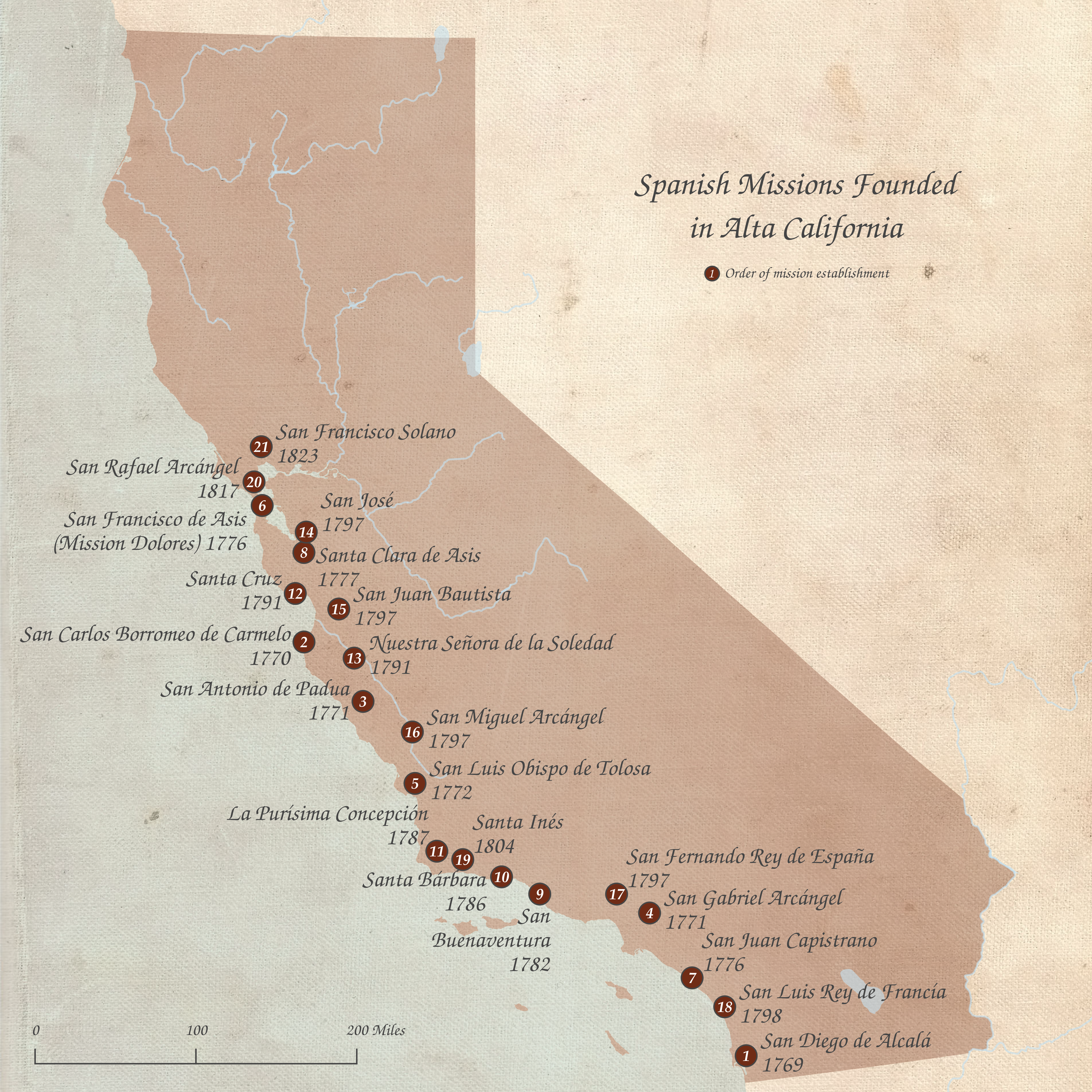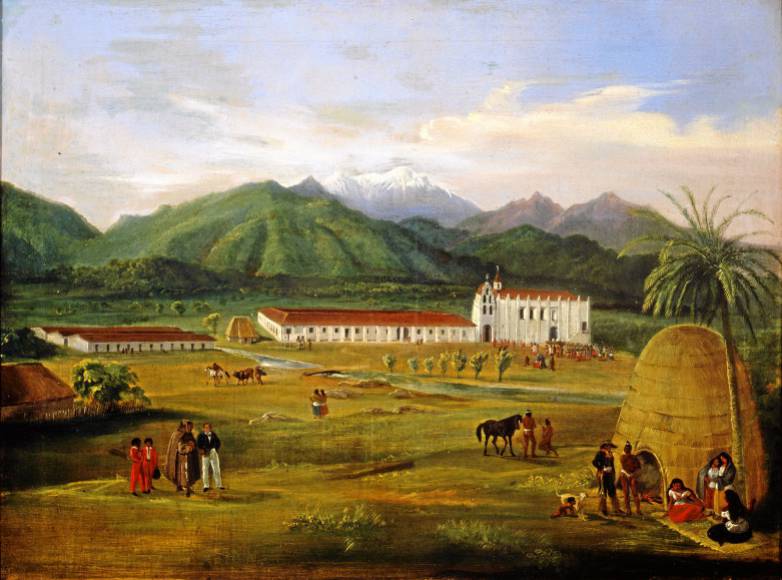|
Wikangna
Wikangna (pronounced ''wi-kong-na'') was a Tongva village located in the Crescenta Valley area, possibly in Las Barras Canyon at the site of the Verdugo Hills Golf Course. Wikangna was one of three central villages located in the Crescenta Valley area, including Tuyunga and the largest settlement of Hahamongna. History Wikangna prospered for thousands of years, thriving off the abundance of the local flora and fauna of the area, including large sprawling oak forest (of which a small part remains) and a small spring. The arrival of Spanish colonizers in 1771 led to the decline of the village. This similarly occurred with nearby villages in the area. Wikangna was likely abandoned completely during the mission period. After the missions were secularized by the First Mexican Republic The First Mexican Republic, known also as the First Federal Republic (), existed from 1824 to 1835. It was a Federal republic, federated republic, established by the 1824 Constitution of Mexico, ... [...More Info...] [...Related Items...] OR: [Wikipedia] [Google] [Baidu] |
Crescenta Valley
The Crescenta Valley is a small inland valley in Los Angeles County, California, lying between the San Gabriel Mountains on the northeast and the Verdugo Mountains and San Rafael Hills on the southwest. It opens into the San Fernando Valley at the northwest and the San Gabriel Valley at the southeast. It is nearly bisected by the Verdugo Wash, a smaller valley separating the Verdugo Mountains from the San Rafael Hills. Most of the valley lies at an elevation of over . Etymology The name "Crescenta" does not derive from the Spanish word for "crescent", which is ''el creciente''. Benjamin Briggs coined the name from the English word "crescent" because he could see three crescent-shaped formations from his home,Gudde, Erwin G. (1998). ''California Place Names: The Origin and Etymology of Current Geographic Names'', 4th ed. Berkeley: University of California Press. or because of the shape of the valley.Dougherty, June (1993). ''Sources of History: La Crescenta''. Privately printe ... [...More Info...] [...Related Items...] OR: [Wikipedia] [Google] [Baidu] |
Tongva
The Tongva ( ) are an Indigenous peoples of California, Indigenous people of California from the Los Angeles Basin and the Channel Islands of California, Southern Channel Islands, an area covering approximately . In the precolonial era, the people lived in as many as 100 villages and primarily identified by their village rather than by a pan-tribal name. During colonization, the Spanish referred to these people as Gabrieleño and Fernandeño, names derived from the Spanish missions in California, Spanish missions built on their land: Mission San Gabriel Arcángel and Mission San Fernando Rey de España. ''Tongva'' is the most widely circulated endonym among the people, used by Narcisa Higuera in 1905 to refer to inhabitants in the vicinity of Mission San Gabriel. Some people who identify as direct lineal descendants of the people advocate the use of their ancestral name ''Kizh'' as an Endonym and exonym, endonym. The Tongva, along with neighboring groups such as the Chumash peopl ... [...More Info...] [...Related Items...] OR: [Wikipedia] [Google] [Baidu] |
Tuyunga
Tuyunga or Tujunga (Tongva: ''Tuhuunga'', “place of the old woman”) is a former Tongva (Fernandeño) village now located at Sunland-Tujunga, Los Angeles in Los Angeles County, California. The village was located near the original Rancho Los Encinos that became the Mission San Fernando Rey de España in the San Fernando Valley. People of the village frequently intermarried with people from neighboring Chumash villages. The nearby valley renamed Crescenta Valley by the Spanish was potentially used as a seasonal hunting location with access to the waters of the canyon. The Tongva regularly cultivated plants in the region, as reported by a Spanish survey of the area in 1795, who sought to exploit the site for the construction of another mission. Toponymy The village name is referred to in the following places: * Big Tujunga Creek, major stream in Los Angeles County * Big Tujunga Dam, dam in Los Angeles County * Sunland-Tujunga, Los Angeles, a neighborhood in the city of Los A ... [...More Info...] [...Related Items...] OR: [Wikipedia] [Google] [Baidu] |
Hahamongna, California
Hahamongna (alternatively spelled Hahaamonga or Jajamonga) and Hahamog-na are two historic Tongva village sites. They are located in the Verdugo Mountains of Southern California and bear the name of the local band of indigenous Tongva, "'' Hahamog'na."'' The sites are located in present-day Pasadena and Glendale in Los Angeles County, California. Hahamongna was one of the largest Tongva villages in the greater San Fernando Valley area, along with Cahuenga, Tujunga, and Siutcanga. Locations Hahamongna – Glendale Hahamongna was located in present-day Glendale and existed on the lower southwestern Verdugo Mountains slopes and the eastern San Fernando Valley plain with the free-flowing Los Angeles River just south. This village would later move to the western portion of Rancho San Rafael, an early Spanish land grant in 1784 issued by Las Californias Governor Pedro Fages to Spanish Corporal José María Verdugo (1751–1831), in present-day Glendale in the San Fernando ... [...More Info...] [...Related Items...] OR: [Wikipedia] [Google] [Baidu] |
First Mexican Republic
The First Mexican Republic, known also as the First Federal Republic (), existed from 1824 to 1835. It was a Federal republic, federated republic, established by the 1824 Constitution of Mexico, Constitution of 1824, the first constitution of independent Mexico, and officially designated the United Mexican States (, ). It ended in 1835, when conservatives under Antonio López de Santa Anna transformed it into a unitary state, the Centralist Republic of Mexico. The republic was proclaimed on November 1, 1823 by the Supreme Executive Power, months after the fall of the First Mexican Empire, Mexican Empire ruled by emperor Agustín de Iturbide, Agustin I, a former royalist military officer-turned-insurgent for independence. The federation was formally and legally established on October 4, 1824, when the 1824 Constitution of Mexico, Federal Constitution of the United Mexican States came into force. The First Republic was plagued through its entire twelve-year existence by severe ... [...More Info...] [...Related Items...] OR: [Wikipedia] [Google] [Baidu] |
Spanish Missions In California
The Spanish missions in California () formed a List of Spanish missions in California, series of 21 religious outposts or missions established between 1769 and 1833 in what is now the U.S. state of California. The missions were established by Catholic priests of the Franciscan order to evangelism, evangelize Indigenous peoples of California, indigenous peoples backed by the military force of the Spanish Empire. The missions were part of the expansion and settlement of New Spain through the formation of Alta California, expanding the empire into the most northern and western parts of Spanish North America. Civilian settlers and soldiers accompanied missionaries and formed settlements like the Pueblo de Los Ángeles. Indigenous peoples of California, Indigenous peoples were forced into settlements called reductions, disrupting their traditional way of life and negatively affecting as many as one thousand villages. European diseases spread in the close quarters of the missions, ca ... [...More Info...] [...Related Items...] OR: [Wikipedia] [Google] [Baidu] |
Tongva Populated Places
The Tongva ( ) are an Indigenous people of California from the Los Angeles Basin and the Southern Channel Islands, an area covering approximately . In the precolonial era, the people lived in as many as 100 villages and primarily identified by their village rather than by a pan-tribal name. During colonization, the Spanish referred to these people as Gabrieleño and Fernandeño, names derived from the Spanish missions built on their land: Mission San Gabriel Arcángel and Mission San Fernando Rey de España. ''Tongva'' is the most widely circulated endonym among the people, used by Narcisa Higuera in 1905 to refer to inhabitants in the vicinity of Mission San Gabriel. Some people who identify as direct lineal descendants of the people advocate the use of their ancestral name ''Kizh'' as an endonym. The Tongva, along with neighboring groups such as the Chumash, played an important role in the cultural and economic dynamics of the region at the time of European encounter. They ha ... [...More Info...] [...Related Items...] OR: [Wikipedia] [Google] [Baidu] |



